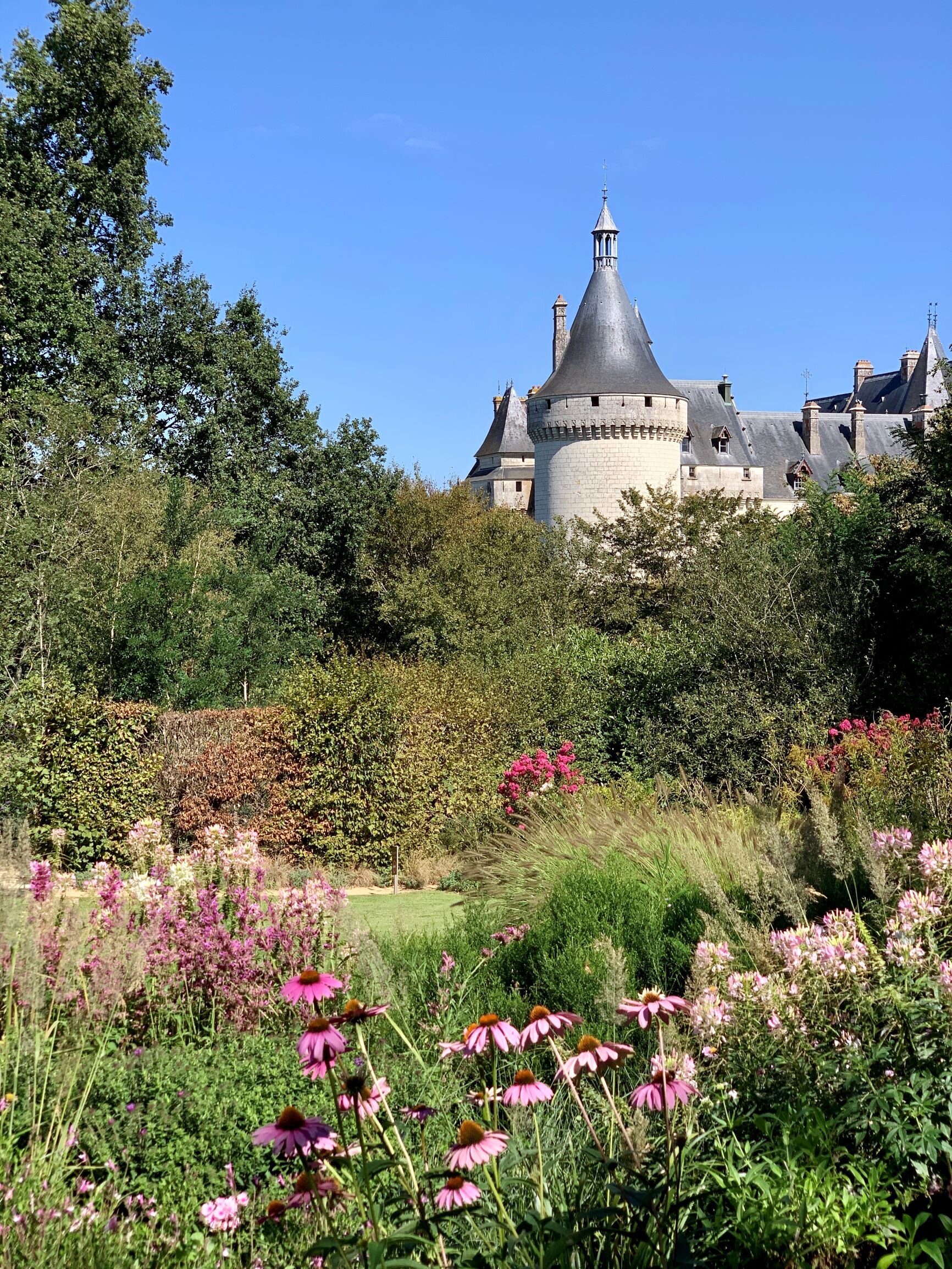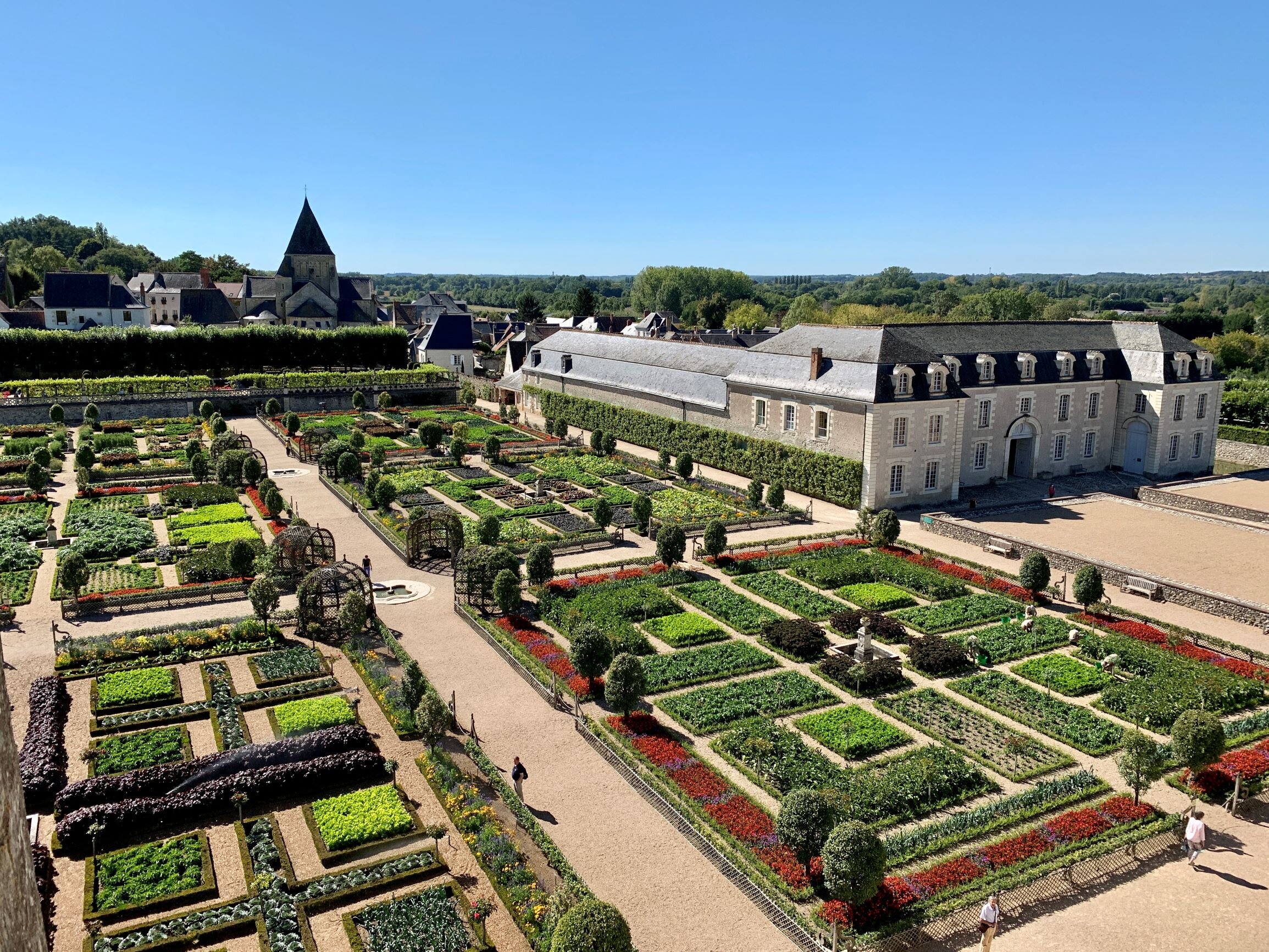Why the Loire Valley Has So Many Castles
An art installation in the chapel at Chaumont-sur-Loire in the Loire Valley, France. September 10, 2020.
You’ll find castles all over France (and Europe, for that matter), but the Loire Valley area has worldwide, UNESCO-level fame for its concentration of well preserved, magnificent châteaux (so many, in fact, that no one has ever agreed upon a final number).
A fair question that you might have: Why?
Why does the Loire Valley have such a high concentration of castles? And why are so many of the Loire Valley castles so well preserved?
Two Castle Periods: Fortresses and Châteaux
As with every investigation, I found not a simple answer—but an interesting one.
My research uncovered two main Loire Valley castle “periods:”
The fortresses built during The Hundred Years’ War
The châteaux created and refashioned during the French Renaissance
We can credit these two waves of castle-loving periods for the concentration and magnificence of the châteaux in the Loire Valley.
Let’s dig into more detail.
The First Castle Era: Fortresses
I won’t try to successfully summarize a war that lasted over a hundred years, through three phases separated by three truces, in a blog post.
To poorly summarize it, I’ll say that The Hundred Years’ War lasted from 1337 through to 1453 and—although the two sides had various allies at different moments in the seemingly endless conflict—involved mainly the French and the English battling it out for land, resources, and power.
Side note: The longstanding (and still extant) grudge between the French and the English largely stems from this century-long conflict. Go figure that warring with another people for over one hundred years takes a lingering toll on popular perceptions.
Over the course of all this fighting, territory changed hands several times. However, the area we now consider the Loire Valley had a bit of a frontier position between the opposing camps, with the English controlling much of the territory above the Loire River and the French controlling the area below it.
Both sides—French and English—built considerable fortresses in this region during this period to secure their positions and provide a base for their operations.
Medieval fortresses designed to defend and protect don’t have the same level of princess-style luxury many of us associate with French châteaux, yet they do still manage to capture our imagination with their dungeons, drawbridges, arrow slits, and chutes down which soldiers could drop boiling and noxious liquids onto invading armies.
When the Hundred Years’ War finally ended, the fortresses entered the hands of the noble landowners. Some of these nobles found uses for them, though many left them to gradually descend into ruin.
Many of the castles I recommend in my post on the castles that history lovers should see in the Loire Valley have had careful preservation of their medieval past.
The Second Castle Era: The French Renaissance
Not too terribly long after the end of The Hundred Years’ War, the French and the Italians started to battle each other. Although these battles didn’t involve the Loire Valley, they did take the French into northern Italy, which had already moved from its medieval period into the Renaissance.
What the French saw in Italy impressed them immensely, and they returned to France inspired by Italian architecture and design. (King François I even went so far as to import Leonardo da Vinci, too. You can see the castle that housed him in his final years in my article about the most history-linked Loire Valley châteaux.)
This fervor for the Italian Renaissance morphed into what we now know as the French Renaissance. The style of the French Renaissance took hold of the nobility in force, spurring them to completely renovate their homes, estates, and fashions.
And given that the French monarchy maintained its seat in Tours, a city in the Loire Valley, until nearly the 17th century—the center of government didn’t move to Paris until 1594—this meant that the nobles paid a lot of attention to acquiring or refashioning residences in the region. After all, proximity to and influence with the king could mean everything to a family’s current and future fortunes.
Changing a castle from a fortress to an elegant residence involved no small amount of renovation. Medieval fortresses built primarily for military purposes needed complete refashioning to bring them up to standard for modern conveniences and styles of living that involved an entire family and its servants, too. Further, as these fortresses needed to impress peers and kings, drawbridges and defensive walls came down or changed form to support luscious gardens, landscaping, fountains, and grand entrances fit for glorious parties.
For this reason, the castles either built or extensively renovated during the French Renaissance feature heavily in my article on the Loire Valley castles to see for beauty.
How the Castles Fared During the French Revolution, the World Wars, and Beyond
The French Revolution, which lasted about ten years (much longer than most people realize), saw the rise of the people against the nobility and the monarchy.
During the revolution, many châteaux (and other monuments related to the church and the monarchy) suffered serious damage. As the people ousted the nobility from its luxury estates, they often destroyed or vandalized the property to prevent the return of the nobility, decrease the value of its holdings (and thereby its wealth), and vent its anger.
During the two world wars, both of which ravaged France (albeit in different ways), the Loire Valley castles that survived the French Revolution often served as military bases, offices, and hospitals. Fortunately, though the castles experienced some damage during the wars, the majority survived relatively unscathed.
One castle, Chenonceau, played a significant role in both world wars, serving as a hospital in World War I and then, in World War II, as a waystation between free and occupied France. The Cher River demarcated the French-German border, and the castle had a river-spanning gallery that allowed some refugees to escape south to safety.
An area in Chenonceau dedicated to showcasing the castle’s role as a military hospital in World War I. September 11, 2020. Loire Valley, France.
Chenonceau is the sole Loire Valley château on my must-see lists for beauty castles and for history castles.
Today, many Loire Valley castles still have private owners, some of whom open parts of their properties to the public. The state maintains and manages many others as tourist sites.
Though the Loire Valley châteaux have lured sightseers for decades, the increasing ease of travel has made them popular and has spurred increased public and private investment in the castles and the region, evolving the Loire Valley into an incredible experience for people from around the world.
Eager for More?
When you try to summarize a few hundred years of history in a concise article, you miss a lot of nuance.
If what I’ve shared intrigues you to learn more about these stories (and I hope it does—studying history provides endless wonders), I invite you to visit your local bookstore or library to find the endless sources that exist on the topics I’ve touched on here.
If this article has stoked your interest in visiting the Loire Valley and seeing its castles, I have some good news for you: I’ve written a whole series of articles on the subject. In addition to the posts already linked above, I’ve published a comprehensive how-to guide for planning your Loire Valley châteaux-sightseeing trip and a post on how to prioritize your castle sightseeing (for those of us with limited time).
And you can scroll through all the articles I’ve written about the Loire Valley via this link.











